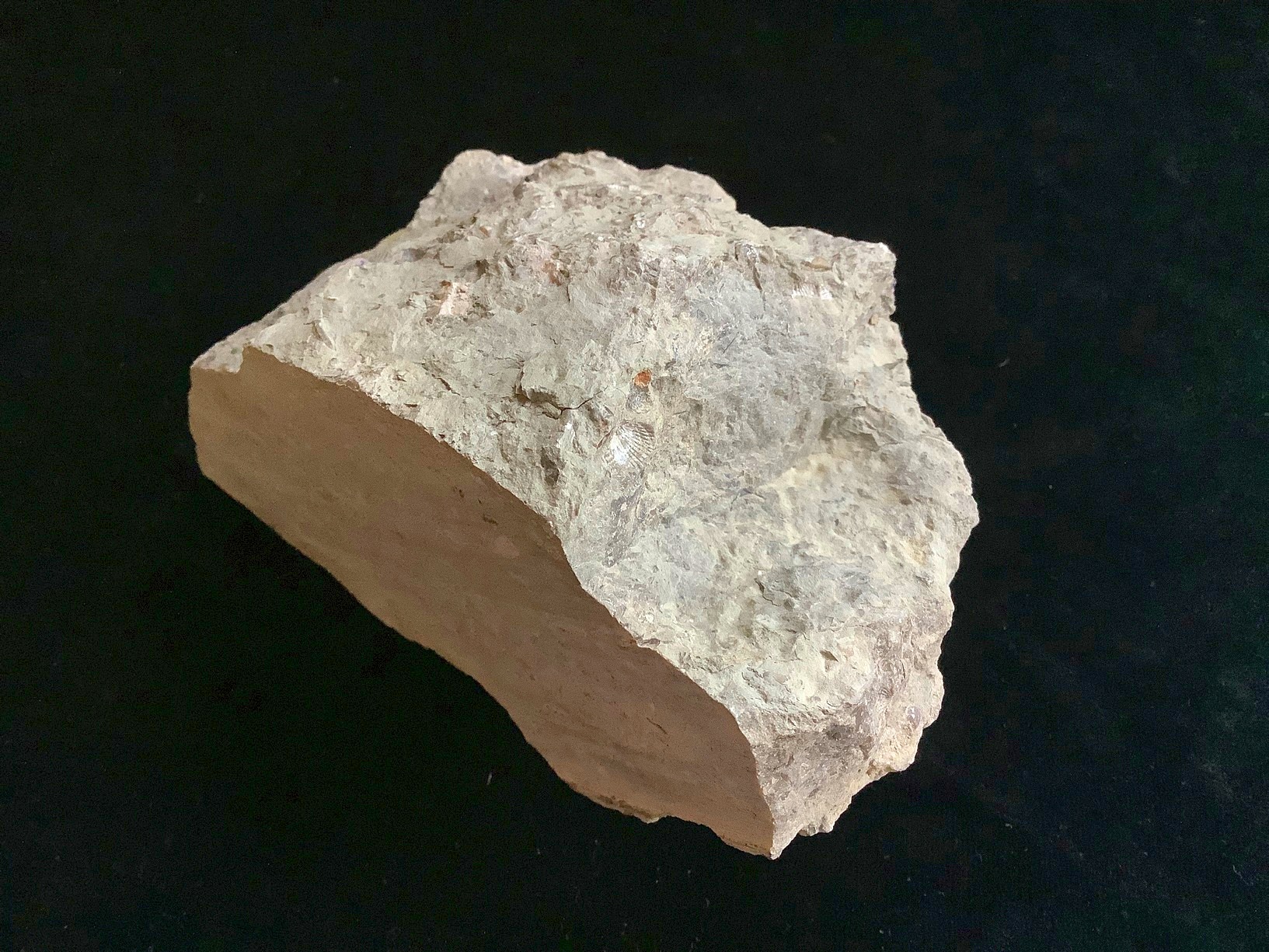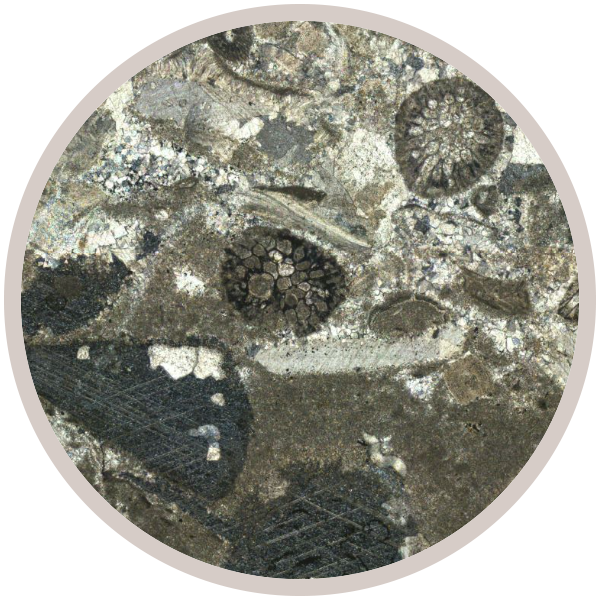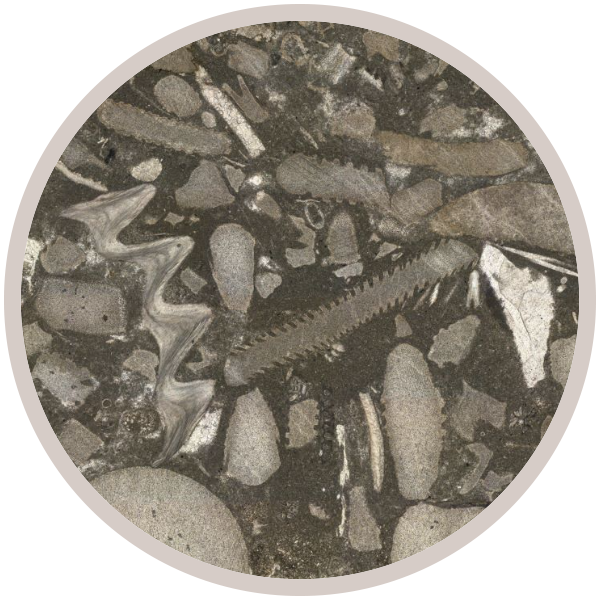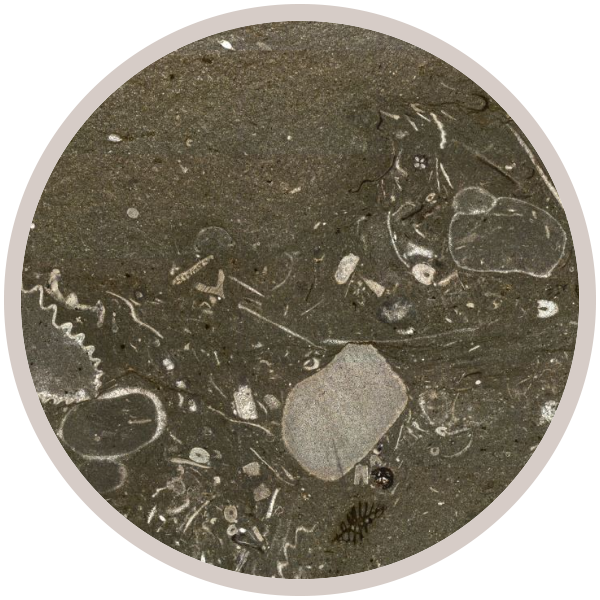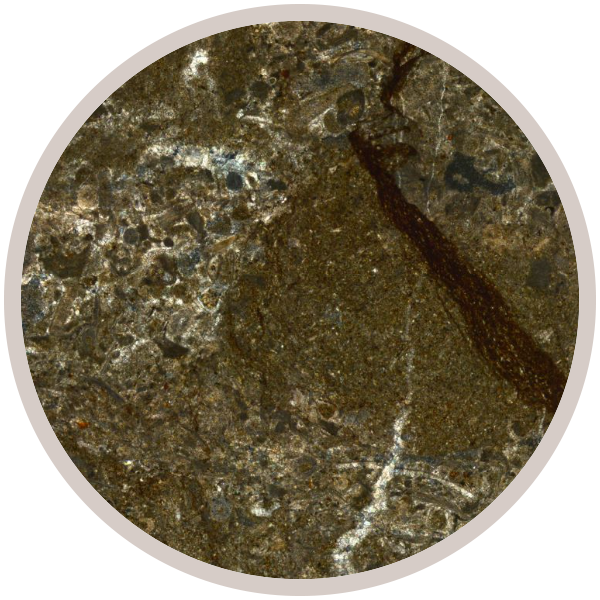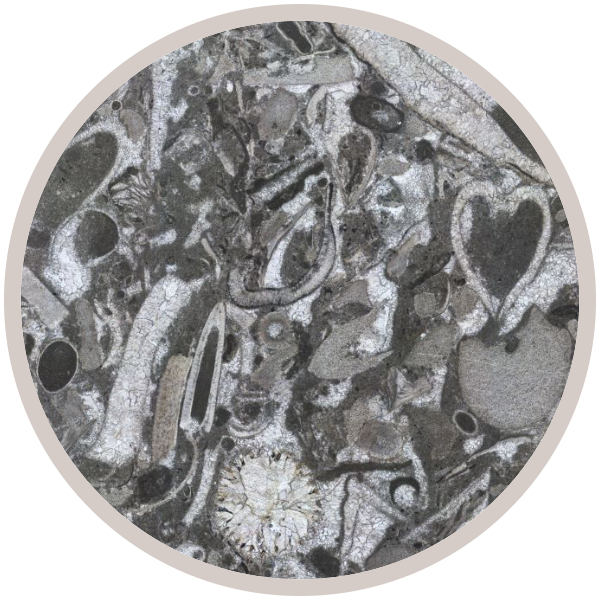
Fact sheet
Silurian limestone of Wenlock age, containing a rich variety of well-preserved fossils and fossil fragments in a brown, fine-grained micrite groundmass. This sample was collected from around the reef mounds at Wren's Nest.
The limestone was laid down in a shallow tropical sea south of the equator around 428 million years ago. The area of Wren's Nest featured small coral reefs teeming with life, separated by shallow banks and troughs of lime mud. This sample was likely deposited near a reef, with abundant shelly debris and micrite. Sparite is mainly limited to infills of voids in fossils or replacements of some shell fragments.
The limestone reefs nearby were home to compound and solitary corals, bryozoans, crinoids, brachiopods, gastropods, cephalopods and trilobites. Bioclasts in this assemblage include echinoderm plates and crinoid stems, fibrous and ribbed brachiopod shells, corals, bryozoans and a few gastropods. There is a classic, heart-shaped section through a brachiopod shell in the top right corner.
This sample was collected as part of the 'Macro to Micro' project.
This Collection showcases the geodiversity of a classic geological site: the Wren's Nest National Nature Reserve in the West Midlands.
As well as displaying thin section and hand specimen views along with information setting them in the context of their landscapes, we also include perspectives and creative responses to the geological heritage of the sites from the local community.
| Explore the stories of the rock layers at Saltwells and Wren's Nest NNRs, designed by students at King Edward VI School, Stourbridge: |
This Collection was made possible by funding awarded to the 'Macro to Micro' project by the Natural Environment Research Council (NERC) under their 'Growing Roots' scheme.
